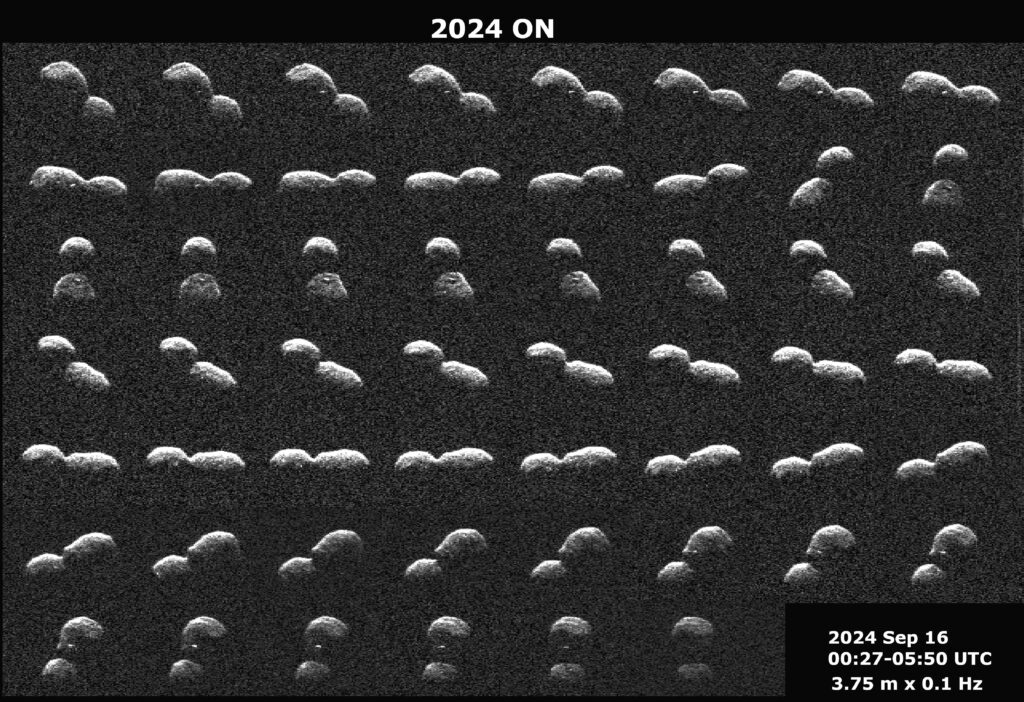NASA’s Jet Propulsion Laboratory has released a series of radar images obtained by the Deep Space Network’s Goldstone Solar System Radar. They show asteroid 2024 ON.

Asteroid 2024 ON was discovered by telescopes of the ATLAS robotic system, on July 27, 2024. Its diameter was estimated at several hundred meters. Calculations showed that on September 17, it would fly at a distance of about 1 million kilometers from the Earth. This is 2.6 times the distance between our planet and the Moon.
Scientists from NASA decided to take advantage of this opportunity and study the celestial guest more closely. For this purpose, the Goldstone Solar System Radar Group of long-range space communication was used. After the destruction of the Arecibo Observatory, it has become the most powerful radar at astronomers’ disposal that they can use to observe near-Earth asteroids.
On September 16, Goldstone obtained a series of images of 2024 ON. They showed that it was a so-called contact-binary asteroid and its shape resembles a peanut. 2024 ON consists of two parts, one of which is about 50% larger than the other, connected by a pronounced neck. Astronomers managed to establish that the total length of the asteroid is 350 meters, and the orbital period is 6 hours. Objects up to 3.75 meters across are visible on the surface. Bright radar spots probably indicate large boulders.
Contact- binary objects like 2024 ON are formed when two celestial bodies collide at low velocities, resulting in a “merger” between them. The best known examples of such bodies are the Churiumov–Herasymenko comet, which was the target of the Rosetta mission, and the Arrokoth object, which was studied by the New Horizons probe. Astronomers estimate that at least 14% of near-Earth asteroids larger than 200 meters are contact-binary.
As for 2024 ON, this asteroid is classified as potentially dangerous. But according to astronomers, it poses no danger to our planet in the foreseeable future. Radar measurements allowed them to greatly reduce the uncertainty in their measurements of the asteroid’s distance from Earth and determine its orbit for many decades to come.
Earlier we told you that in the distant past, Earth may have had rings formed from the debris of a destroyed asteroid.
According to JPL


